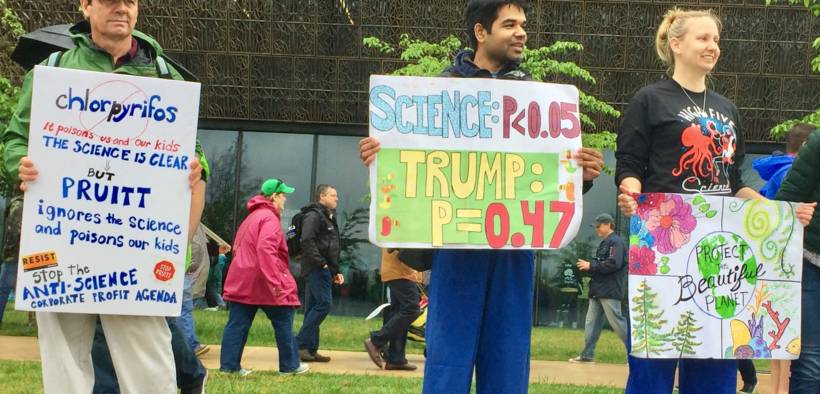Why a New EPA Rule to Improve Transparency May Be a Ploy to Restrict Science

“This proposal has nothing to do with science. They want politicians, not scientists, to evaluate the evidence of harm to the public.”
The Trump administration is moving forward with plans to restrict the science it uses in crafting public policy, the New York Times first reported Monday. The Strengthening Transparency in Regulatory Science rule will require that scientific reports disclose all of their raw data to be eligible for usage in policy consideration, a change that critics say will undermine public health protections.
Many scientific reports used to determine medical and environmental regulations contain confidential personal information, such as private medical files, and would, therefore, be deemed ineligible for public policy consideration under the new rule.
The Times’ Lisa Friedman notes that many studies used in decades-old regulations, such as research showing how “mercury from power plants impairs brain development, or that lead in paint dust is tied to behavioral disorders in children—might be inadmissible when existing regulations come up for renewal.”
Because of the Trump administration’s strong ideological disposition, critics believe the new rule isn’t sincerely being implemented to improve transparency. The administration has previously reprimanded scientists who have dissented from the administration’s positions and worked to water down their findings. President Trump denies climate change and has worked to purge his administration of scientists. His EPA has slashed numerous environmental protections, from coal ash, glyphosate and asbestos to methane and carbon emissions.
“Vague appeals to transparency do not warrant the agency impairing its use of quality science,” said Hayden Hashimoto, a legal fellow at the Clean Air Task Force, in a statement. “EPA already has peer review processes in place to evaluate influential scientific information that the agency relies on for its regulations.”
Former EPA head Scott Pruitt introduced a similar proposal last year, which received over 600,000 mostly-critical public comments, Common Dreams reports. After Pruitt resigned amid numerous ethics scandals, his successor, former coal-lobbyist Andrew Wheeler, temporarily delayed the policy change while making clear his intention to eventually implement the rule.
“Good science is science that can be replicated and independently validated, science that holds up to scrutiny. That is why we’re moving forward to ensure that the science supporting agency decisions is transparent and available for evaluation by the public and stakeholders,” Wheeler told a congressional committee in September. “I fundamentally believe the more information we provide to the public, the better our regulations will be and the more they will trust our decisions.”
A broad-ranging coalition of public health and environmental groups disagree with Wheeler’s rationale. A group of more than 100 bipartisan lawmakers urged the EPA to scrap the proposed rule after Pruitt first unveiled it in 2018.
“Contrary to its name, the proposed rule would implement an opaque process allowing EPA to selectively suppress scientific evidence without accountability and in the process undermine bedrock environmental laws,” the lawmakers asserted.
“This proposal has nothing to do with science. They want politicians, not scientists, to evaluate the evidence of harm to the public,” Michael Halpern, deputy director for the Center for Science and Democracy at the Union of Concerned Scientists, wrote in a statement. “ … This entire exercise is designed to exclude certain types of public health studies that demonstrate that pollution makes people sick.”
The EPA responded to the New York Times’ article on the new rule on Tuesday, claiming it was partially inaccurate.
“The EPA took issue with parts of that report, saying in a news release that the Times had relied on a ‘preliminary’ draft, and not the ‘final text’ sent to OMB for review,” according to the Washington Post. “In particular, the agency insisted that the proposal would not apply retroactively to existing regulations.”
However, the Post notes that the EPA has yet to release an alternative draft or explain how its updated draft would differ. The EPA will strive to finalize the rule before the end of Trump’s first term, overriding widespread public health and environmental critics, according to the Post.















